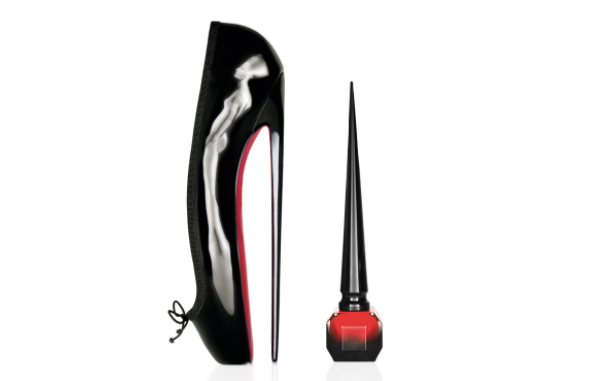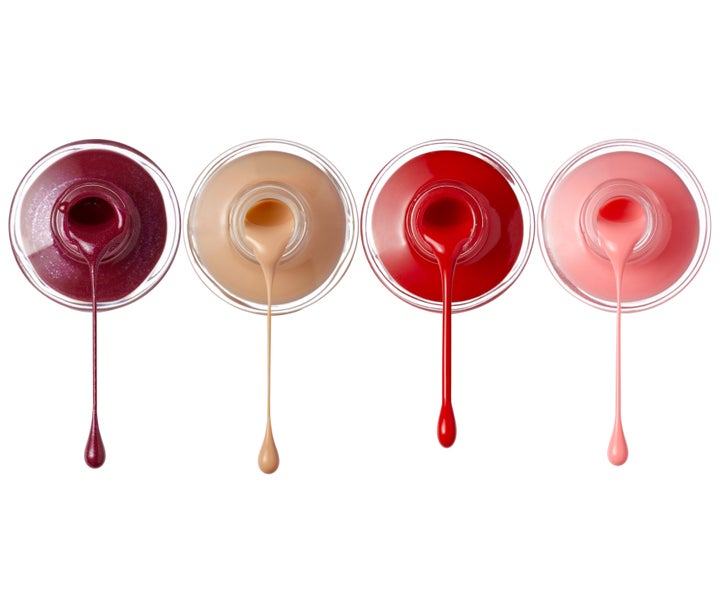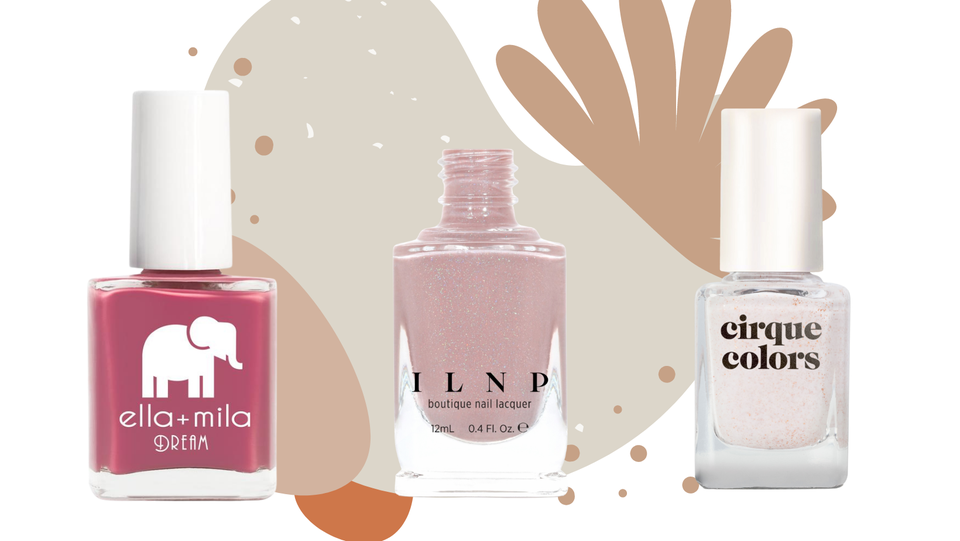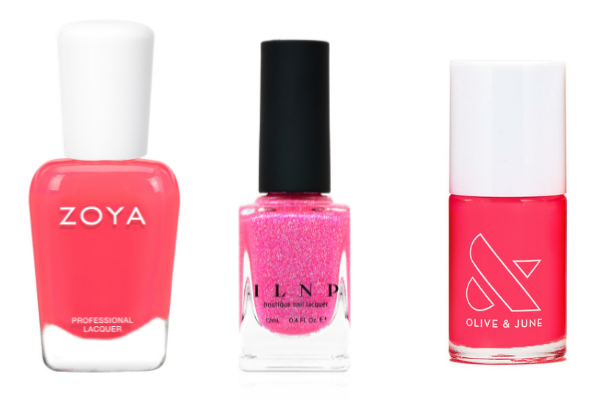In the world of nail polish, there’s a wide range of colors, formulas, finishes and prices. But what’s the difference between the cheap nail polish at the drugstore and a $50 designer bottle from a luxury department store, plus the mainstream salon and independent nail polish brands in between?
It turns out the main differences that affect price are marketing and packaging, according to experts.
“The reality is that nail polish technology is rather mature and hasn’t changed that much in a lot of years,” Perry Romanowski, cosmetic chemist and co-host of The Beauty Brains podcast, told HuffPost. “The biggest difference between expensive products and less expensive products is mostly packaging. The bottles for expensive products look nicer and the brushes also likely work better, but as far as colors and technology, there isn’t much difference.”

Economies of scale are also at play here. Larger nail polish companies can purchase in bulk and produce their polish more quickly and in higher quantities than an independent nail polish brand doing everything by hand. A cheaper nail polish isn’t necessarily of lower quality than a more expensive nail polish, and nail polish made by a smaller brand isn’t automatically inferior.
In fact, if you’re in the market for nail polishes with special finishes, smaller indie brands are often the way to go.
“Those independent formulas are made in much smaller batches, so they’re able to do more experimental things like use more expensive pigments, iridescent flakes and shimmers,” Kelli Marissa, a beauty YouTuber with 238,000 subscribers and more than 2,000 nail polishes in her ever-growing collection, told HuffPost.
Premium packaging and custom formulas can lead to higher prices for the final products
In a crowded market, premium packaging (such as an outer carton or a unique nail polish bottle) and custom formulas are investments that some brands make in order to stand out.
“A brand without a lot of capital may work with a private label company that can provide a catalog of standard colors and stock packaging to choose from to go to market quicker,” Annie Pham, founder and creative director of Cirque Colors, told HuffPost. “A brand that wants to stand out a little bit more may want to work with a contract manufacturer that can provide lab and formulation services, but all of this comes at a cost.”
Pham added that brands often invest in unique packaging, such as a fancy box or custom cap, which also adds to the cost of the product. Bigger brands with a lot of money and resources can purchase polish and packaging in larger quantities to bring down costs, so they sell their product at a lower price than indie nail polish brands.
While a fancy box or bottle won’t affect the performance of a polish, a superior brush will.
“More expensive brushes are made up of fibers that are more elastic and better able to retain their shape over time,” Romanowski said. “This makes application easier to do and gives the user more control. Cheaper brushes may work fine for the first few applications, but over time they start to fray and lose their straight shape. Nylon fibers with the appropriate plasticizers will work best.”
Special finishes and mix-ins come at an added cost
Crème (opaque polish in a solid color) and sheer nail polishes are widely available, but polishes with special finishes, such as holographic, multichrome and thermal (colors that change based on temperature), and mix-ins like irregular and iridescent flakes are more expensive to make.
“Cremes and sheers are pretty standard — you see them everywhere — and are often cheaper to produce,” Pham said. “Colors with unique finishes are more expensive to produce due to the cost of the materials as well as the labor involved with formulating with these ingredients.”
She added that working with unique pigments requires extra steps, including sourcing, finding a reliable supplier and thorough formula testing.
It’s worth spending more on a good base and top coat
However much you decide to spend on a bottle of nail polish, investing in a quality base coat and a quality top coat (not a 2-in-1 combo) is key “because that’s where it really matters,” Marissa said.
“I always suggest reading or watching reviews to see other people’s experiences with [brands],” she added.
In terms of distinguishing what’s “quality” and what’s not, there aren’t necessarily specific formulas that work for everyone. Rather, you should find a base coat and top coat that work with your body chemistry, which can be a process of trial and error.
“There are all different types of base coats, from regular to ridge-filling to peel-off,” Pham said, adding that the same goes for top coat, with options like quick-dry and gel-like. “They all serve different purposes, and there are definitely pros and cons for each. For example, a ‘gel-like’ top coat isn’t going to be as fast-drying as a quick-dry one, due to the higher viscosity.”
“A custom formulation is one way a brand can stand out, but in terms of longevity, there’s really no substitute for base coat and top coat,” she added. “Those two products are key in making a longer-lasting manicure.”

So what’s the difference between the two, exactly? A base coat is used to protect your nails from staining and it helps polish adhere better to the nails.
“A good base coat will help your manicure last longer, so even if you are using an inexpensive polish, a more expensive base coat will help the polish grip onto your nails a little bit better,” Marissa said. “Base coat only goes so far but it is still important, especially if you’re just getting started and you don’t want to invest in super expensive nail polishes.”
Top coat has a completely different function. It seals in your manicure with a glossy shine (or matte finish) and protects the polish underneath from chipping or smudging.
“The majority of high-quality top coats are fast-dry topcoats,” Marissa said. “You need to use a top coat in order to help the layers underneath fully set. It’s how you avoid getting sheet marks on your manicure after sleeping. If you’re using a cheap top coat, it can take a long time for your manicure to fully dry — if it ever does.”
While Marissa doesn’t recommend buying a cheap drugstore base coat or top coat, quality brands such as OPI, Essie and Seche Vite are widely available.
“You don’t have to go to a boutique and buy a specialty base and top coat, but it is good to invest in a good one,” she said.
A note on “nontoxic” nail polish
When shopping for nail polish, you’ll often see “nontoxic” safety claims such as 10-free and 5-free, which mean the polish is made without certain ingredients, such as camphor and formaldehyde. But Romanowski said this tends to be a marketing gimmick.
“Standard nail polish continues to be safe even when including the chemicals that people now market as ‘free from,’” Romanowski said, adding that not only are ingredients such as toluene and formaldehyde resins present in safe amounts in nail polish, but they actually help nail polish perform better.
Toluene, for example, is “volatile and quickly evaporates so your nail polish dries more quickly,” Romanowski said. “Formaldehyde resins help the nail polish bond to your nails better, which makes them last longer and not chip as much.”
“When a brand is trying to make their product stand out, fear marketing is an effective way to scare consumers away from their competitor’s product and toward their own,” he continued, stressing that polishes that aren’t marketed as 10-free or 5-free are just as safe as those with the labels.
While nail polishes made with alternative ingredients won’t last as long or dry as quickly, Romanowski said some consumers accept these trade-offs to avoid a perceived risk.
Kelly Dobos, former president of the U.S. Society of Cosmetic Chemists, echoed Romanowski’s sentiments on the general safety of nail polishes available on the market.
“I find ‘free from’ claims are often rooted in misconceptions and misinformation, even if they are well-meaning,” she told HuffPost. “All cosmetics in the United States must be safe for consumers, per label instructions or customary use, according to FDA regulations. Good cosmetic manufacturers perform a battery of tests and a toxicological evaluation before placing a product on the market, so it’s not fair to say one is safer than another without scientific evidence as long as they both are following the federal law.”
In fact, Dobos pointed out that when a cosmetic ingredient becomes undesirable to include, the rush to replace it can result in the use of an ingredient that manufacturers know even less about.
“Even nail polish with ‘free from’ claims can contain ingredients that are potentially harmful but safe when used as directed,” she said.
Of course, if you’re allergic to a specific ingredient in nail polish, “free-from” claims and ingredient labels in general can help you avoid them. Allergies aside, your natural nails offer protection from the chemicals used in nail polish.
“The nail plate is made of densely packed keratin, the same material that animal hooves and claws are made of, which acts as a barrier preventing absorption,” Dobos said.
Check out swatches and reviews before buying
The color of a nail polish in the bottle may not reflect how it looks painted on the nail, and it tells you nothing about the formula (including pigmentation or how smoothly it applies). Whether you’re shopping in person or online, doing some research beforehand can help you make informed decisions about which polishes to add to your collection.
This is especially important for cheaper nail polishes, Marissa said, as pigments and formulas can be hit or miss.
“I personally love LA Colors and think it’s a fun, cheap brand for people to get into, but some colors are patchy and sheer while other colors are opaque and self-leveling,” she said. “It just depends on the specific shade.”
Looking at swatches beyond the well-lit studio photos and digitally created images you see on a brand or retailer’s website can give you a better idea of what the nail polish will look like in real life.
“I always say you should look up multiple reviews and see the polish in different lightings and on different skin tones,” Marissa said. “If you can, find somebody with the skin tone that’s closest to yours so you can see how it would look on you, especially for sheer polishes.”
On her YouTube channel, Marissa swatches entire collections of nail polish on camera and gives her thoughts on the colors and the application experience. Instagram is another place to find a variety of swatches. Some brands such as ILNP have dedicated hashtags for specific shades, which make it easier to find swatches from polish pros and novices alike.

